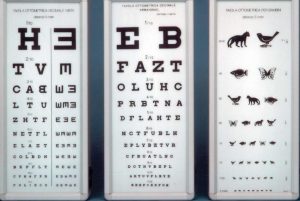This is the result of extensive Korean population research
Myopia is the most frequent refractive defect in the world and in Italy, according to the latest statistics, about 25% of the population is affected.
Typically, myopia begins at school age and increases during the developmental period, tending to stabilise around the age of 20-25, increasing only slightly after that age, unless there are particular pathologies that cause it to progress rapidly.
The earlier the age of onset of this defect, the greater the chance of worsening: statistics indicate an average of 0.5 diopters per year in the developmental age.
 On the prevention front, at the current stage of research, little can be done and the most important intervention is the correction of the defect in the different stages of its progression.
On the prevention front, at the current stage of research, little can be done and the most important intervention is the correction of the defect in the different stages of its progression.
It is precisely for this reason that the mathematical algorithm, the subject of the study published by Drs. Kim and Lim in the Journal of Pediatric Ophthalmology and Strabismus, which led to the development of a new myopia progression diagram.
The research is set up as a population-based study and enrolled 7,695 participants, aged between 5 and 20 years.
The authors collected spherical equivalent (SE) data converted from non-cyclopic refraction data. To construct the myopia progression chart, the data were organised in order of SE from hypermetropia to myopia to acquire specific percentiles of SE by age. Myopia progression rates were calculated between two specific ages in each percentile.
The diagram thus obtained can be used to diagnose the degree of myopia severity or to estimate the likely progression of the refractive defect: a patient in the highest percentile for his age may have myopia that progresses more rapidly and therefore requires more assiduous and careful observation.
Source
Kim DH, Lim HT. Myopia Growth Chart Based on a Population-Based Survey (KNHANES IV-V): A Novel Prediction Model of Myopic Progression in Childhood. J Pediatr Ophthalmol Strabismus. 2018 Oct 26:1-5. doi: 10.3928/01913913-20181003-01.
Dr. Carmelo Chines
Direttore responsabile
